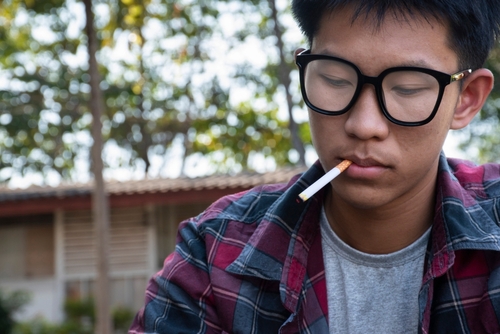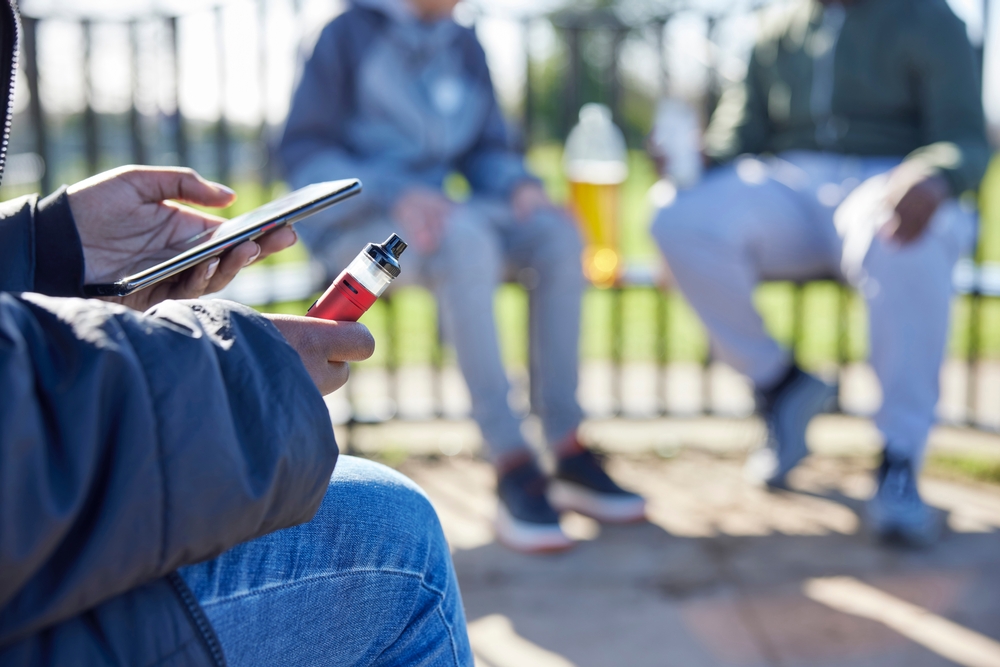Teenagers experiencing difficulty may need special programs to assist them in dealing with their problems and learning how to live their lives peacefully. One primary example is the Scared Straight program.
Children and teenagers at risk of delinquency or already showing signs are placed in jails or prisons as an intervention measure.
While still under adult supervision, youth experience the realities of prison life, such as dressing requirements, cell size constraints, and scary inmates, while losing freedom, all necessary for maturation.
Effects and Results From Involvement in a Scared Straight Program
Scared Straight Programs are designed to deter at-risk youth from criminal behavior by exposing them to the harsh realities of prison life. While the long-term effects of these programs are debated, there are several immediate effects and outcomes worth exploring.
1. Initial Shock:
- Scared Straight Programs typically leave a strong initial impact on participants.
- Exposure to harsh prison conditions, including overcrowding and violence, can be overwhelming.
- For some, this shock can lead to an immediate change in behavior.
2. Emotional Response:
- Many participants experience an emotional response to the program’s content.
- Some may feel fear or intimidation, while others may feel sadness or empathy.
- These emotions can lead to immediate behavioral changes or inspire participants to seek help.
3. Perception of Consequences:
- Scared Straight Programs aim to show participants that their actions have real consequences.
- Exposure to prison life can make the reality of these consequences more tangible.
- The perception of potential consequences may lead to short-term behavioral changes.
4. Increased Awareness:
- Participating in a Scared Straight Program can increase awareness of the impact of criminal behavior.
- This awareness can inspire empathy towards victims of crime and encourage participants to become more engaged in their communities.
Does a Scared Straight Program Help Troubled Teens?
This program seeks to steer troubled teenagers away from criminal behavior by showing them the harsh realities of prison life. However, the practice has been rated as having no effects.
Evaluation findings demonstrated that teens participating in such programs are more likely to break the law in the future, and therefore their average rate of reoffending was more significant than for those who went through regular case management services.
Why do scared-straight programs backfire? Nobody knows why such initiatives have failed, but at least two potential reasons could contribute.
At first, many kids might not have shown much interest in joining gangs or doing other illegal things.
Second, there is evidence that grouping at-risk teens may backfire as they compete to show each other they are tough.
15-year-olds don’t care about what authority figures opinion of them; they only care about what their peers think of them.
Realities Behind Scared Straight Programs
1. Program Overview:
Scared Straight Programs aim to prevent troubled teens from engaging in criminal activity by exposing them to the harsh realities of jail life.
Components of the program often include prison tours, inmate testimonials, and interactive activities. Despite being popularized by the media, such programs’ efficacy and ethical implications have been called into question.
2. Efficacy Concerns:
While intuitively, these programs may seem effective in preventing criminal activity, evidence shows otherwise. Studies have found that Scared Straight Programs have little to no impact on recidivism rates.
Participants in criminal activities may be more prone to engage in unlawful behavior than non-participants. Experts attribute these unfavorable outcomes to glorifying and normalizing criminal behavior in participants’ minds.
3. Ethical Implications:
Not only do Scared Straight Programs lack evidence for their effectiveness, but they also pose ethical concerns about their approach.
Placement of minors in environments that expose them to violence, intimidation, and fear could result in potential psychological damage and negative results. Furthermore, these programs do not address specific underlying issues such as mental health, academic performance, or negative influences that cause delinquent behavior.
4. Alternative Approaches:
Instead of implementing Scared Straight Programs, experts recommend alternative approaches such as positive reinforcement, cognitive-behavioral therapy, and individualized counseling.
These approaches target the underlying issues causing delinquent behavior. Therapeutic boarding schools and residential treatment centers provide a holistic approach to addressing the root cause of problematic behavior and improving recidivism rates.
Key Takeaways:
- Scared Straight Programs often fail to produce positive outcomes and can potentially cause psychological harm to participants.
- These programs normalize criminal behavior, thus increasing the likelihood of continued delinquent behavior.
- Alternative approaches such as positive reinforcement, cognitive-behavioral therapy, and individualized counseling have produced better outcomes for troubled teens.
- Programs that take a holistic approach to addressing underlying issues yield improved results in preventing future delinquent behavior.
Healthy Alternatives to Scared Straight Programs
For troubled teens facing delinquent behavior and negative influences, a Scared Straight program may seem like the only option for intervention.
However, there are healthier alternative programs that have proven more successful at helping troubled teens overcome their issues and lead positive, fulfilling lives.
Wilderness Programs
The Wilderness Program is a better alternative to straight programs for teens. This wilderness therapy focuses on individualized care and takes the approach of getting teens out of their comfort zones as the first step toward rehabilitation.
Hiking, rock climbing, boating, and fishing are standard wilderness camp features for troubled teens.
These programs can help troubled adolescents begin working through their issues and aiming for long-term change through these outdoor adventures. However, it is worth noting that these programs are usually without an academic focus.
By removing young adults from their comfy homes and placing them in the Utah wilderness, the therapy program helps teens learn life skills, problem-solving strategies, and other behavioral changes in a safe environment.
Therapeutic Boarding Schools and Residential Treatment Centers
Therapeutic boarding schools and residential treatment centers are alternative options for troubled teens. These programs offer a safe and structured environment for teenagers to receive academic, mental health, and behavioral treatment.
- Evaluation and Assessment: Upon admission, each teenager undergoes an evaluation to determine their needs and issues.
- Individualized Treatment Plan: Following assessment, a personalized treatment plan is created for each teenager, which can include therapy sessions, medication management, education, vocational training, and life skills development.
- Supportive Environment: These centers provide a supportive environment where teenagers can learn and grow in a safe and structured setting. They can also interact with other teenagers who may be facing similar issues, leading to a peer support system.
- Continued Care and Aftercare: Following the completion of their programs, adolescents receive continued care and aftercare support to ease them back into their daily lives.
Overall, therapeutic boarding schools and residential treatment centers can positively influence troubled teenagers by helping them gain the skills and tools needed for leading an active, fulfilling existence.
Christian Boarding Schools
Christian boarding schools offer a supportive environment that combines academics and faith formation. These faith-based residential institutions encourage well-rounded individuals by balancing academics and spirituality.
Christian boarding schools have a thorough admission process, including academic performance, behavioral history, and willingness to adhere to Christian values. Chapel services, worship sessions, and mentorship programs are part of spiritual growth. These schools are a practical choice for parents considering a place that prioritizes their child’s holistic development.
What Are the Advantages of Troubled Teens Participating in a Treatment Program?
Participating in a treatment program can provide troubled teens with numerous advantages.
Such programs offer a safe and supportive environment where teens can receive therapy, counseling, and other forms of treatment to address their mental health and behavioral issues.
Treatment programs also provide structure and routine, which can help teens develop positive habits and coping mechanisms.
Additionally, being surrounded by peers going through similar struggles can help teens feel less alone and more understood. Finally, participating in a treatment program can help teens build the skills and confidence they need to navigate the challenges of adolescence and beyond successfully.
What Program Is Best for Your Troubled Teen?
There are probably better places to send your teen than a scared straight program. At Help Your Teen Now, we aim to connect your adolescent with services that provide him with the assistance he requires to overcome any hurdles they are currently facing.
Your child is at a crossroads in their development when you cannot afford to make a mistake that might put them back. They need the proper intervention, the proper encouragement, and the true inspiration.
Finding the ideal program is crucial when considering what would work best for any teenager’s situation.
Through thorough research, consultation with professionals, and knowledge of available resources, parents can make more informed decisions when selecting one that will have the maximum effect on their child.
Help Your Teen Now offers programs specifically tailored for troubled teams – get in touch today for more information.











0 Comments